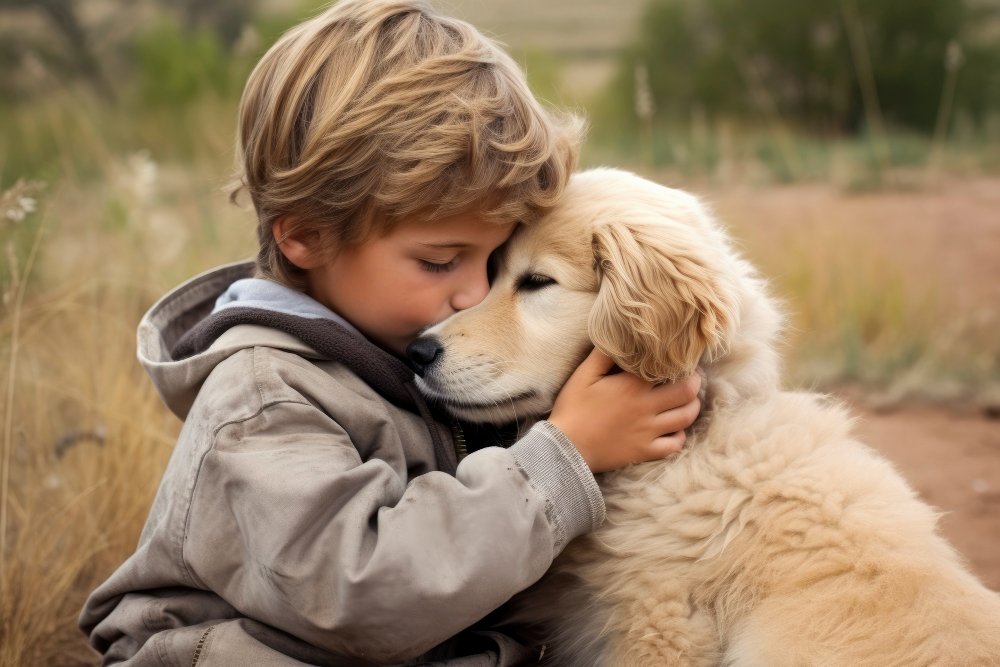How to Explain Pet Euthanasia to Children: A Parent's Guide

How to Explain Pet Euthanasia to Children: A Parent's Guide

Losing a beloved pet is one of life's most difficult experiences, especially when children are involved. The decision to pursue euthanasia for a suffering animal often comes at a time when families are already struggling with grief and difficult emotions. Parents face the challenging task of helping their children understand what's happening while providing comfort and support during this painful time.
Explaining pet euthanasia to kids requires careful consideration of their age, emotional maturity, and relationship with the pet. Children process grief differently than adults, and they need honest, age-appropriate explanations that help them make sense of the situation. This conversation becomes even more significant when families choose in home euthanasia, as children may witness or be more directly involved in the process.
The way you handle this conversation can significantly impact how your child processes grief and their future relationship with pets. By approaching the topic with honesty, compassion, and preparation, you can help your child navigate this difficult experience while creating space for healing and fond memories.
Understanding Your Child's Developmental Stage
Children's ability to understand death and euthanasia varies significantly based on their age and developmental stage. Tailoring your approach to match their cognitive abilities ensures they can process the information appropriately.
Ages 3-5: Simple and Concrete Explanations
Preschoolers think in very concrete terms and may not fully grasp the permanence of death. They often believe death is reversible, like in cartoons or movies. For this age group, use simple language and avoid euphemisms that might confuse them.
Explain that the pet is very sick and in pain, and that the veterinarian will give them special medicine to help them stop hurting forever. Emphasize that this means the pet won't come back, but that it was the kindest thing to do because they were suffering.
Ages 6-9: More Detailed Discussions
School-age children can understand cause and effect better than preschoolers. They may ask more specific questions about the process and need reassurance about their own safety and that of other family members.
You can explain that euthanasia is a medical procedure that helps pets who are very sick or in pain to die peacefully. Emphasize that this is different from when healthy people or animals get sick with regular illnesses that doctors can treat.
Ages 10 and Up: Honest Conversations About Difficult Decisions
Older children and teenagers can engage in more complex discussions about quality of life, suffering, and difficult medical decisions. They may want to be involved in the decision-making process or have strong opinions about what should happen.
Be prepared to discuss the ethical considerations behind euthanasia and why it's sometimes considered a compassionate choice. These children may also benefit from understanding the veterinary medical aspects of the procedure.
Preparing for the Conversation
Before sitting down with your child, take time to prepare yourself emotionally and practically. Your own grief and stress will influence how well you can support your child through this experience.
Choose the Right Time and Place
Select a quiet, comfortable space where you won't be interrupted. Ensure you have enough time for questions and emotional responses. Avoid having this conversation when you're rushing to get somewhere or when your child is tired or distracted.
Gather Your Thoughts
Think through what you want to say beforehand. Consider what questions your child might ask and how you'll respond. It's okay to admit when you don't know something or when you're feeling sad too.
Consider Your Family's Values
Think about your family's religious or spiritual beliefs and how they might influence your explanation. Some families find comfort in discussing concepts like pet heaven or the idea that the pet's spirit lives on in their memories.
Having the Conversation
When you're ready to talk with your child, approach the conversation with honesty, gentleness, and openness to their emotional responses.
Use Clear, Honest Language
Avoid euphemisms like "put to sleep," "went away," or "lost" when explaining euthanasia. These phrases can be confusing and may create anxiety about sleep or getting lost. Instead, use direct but gentle language about death and dying.
Explain that euthanasia means the veterinarian will give the pet medicine that will make their heart stop beating and help them die peacefully without pain. Emphasize that this is very different from the medicine that helps people and animals get better.
Address Their Specific Concerns
Children often worry about whether the pet will feel pain, whether they did something wrong, or whether the same thing will happen to them or other family members. Address these concerns directly and reassuringly.
Explain that the euthanasia process is designed to be painless and peaceful. Reassure them that they didn't cause the pet's illness and that healthy people and pets don't need this kind of medicine.
Validate Their Emotions
Let your child know that all their feelings are normal and acceptable. They might feel sad, angry, confused, or even relieved if the pet has been suffering for a long time. Reassure them that whatever they're feeling is okay.
Share your own emotions appropriately. It's healthy for children to see that adults feel sad about losing pets too, but be careful not to overwhelm them with your grief.
When Choosing In Home Euthanasia
Many families in Reno, NV and elsewhere are choosing in home euthanasia because it allows pets to die in familiar, comfortable surroundings. This option can be particularly meaningful for children, but it requires additional preparation and consideration.
Benefits for Children
In home euthanasia allows children to say goodbye in a familiar environment where they feel safe and comfortable. They can take their time with the process and participate as much or as little as feels right for them. The pet remains in their favorite spot, surrounded by family, which can provide comfort and closure.
Preparing Children for the Process
If your child will be present during in home euthanasia, explain what will happen step by step. Let them know that the veterinarian will come to your house and that the process will be gentle and peaceful. Describe how the pet might look and act, and what they can expect to see.
Give children choices about their level of involvement. Some may want to hold the pet, while others prefer to say goodbye beforehand and leave the room. Both responses are completely normal and should be respected.
Creating Meaningful Rituals
In home euthanasia provides opportunities for meaningful rituals that can help children process their grief. They might want to give the pet a favorite treat, tell them they love them, or place a special toy nearby. These rituals can provide comfort and help create positive final memories.
Supporting Your Child After the Loss
The conversation about euthanasia doesn't end when the pet dies. Children need ongoing support as they process their grief and adjust to life without their companion.
Allow for Ongoing Questions
Children often return to topics over time as they process new information or as their understanding develops. Be prepared to revisit the conversation about euthanasia and answer new questions that arise.
Honor the Pet's Memory
Help your child find ways to remember and honor their pet. This might include creating a photo album, planting a tree, or making a donation to an animal shelter. These activities can help transform grief into positive action and lasting memories.
Watch for Signs of Complicated Grief
While grief is normal, watch for signs that your child might need additional support. These could include persistent sleep problems, significant changes in behavior, difficulty functioning at school, or expressions of wanting to die to be with the pet.
Moving Forward Together
Explaining pet euthanasia to children is never easy, but approaching the conversation with honesty, compassion, and age-appropriate information can help them process this difficult experience. Remember that grief is a process, and both you and your child will need time to heal.
The experience of losing a pet, while painful, can also teach children valuable lessons about love, compassion, and making difficult decisions out of kindness. With your support and guidance, they can emerge from this experience with a deeper understanding of life's complexities and the importance of cherishing the time we have with those we love.
If you're considering in home euthanasia in Reno, NV, contact Rover Veterinary Care today for more information about how they can support your family during this difficult time.
